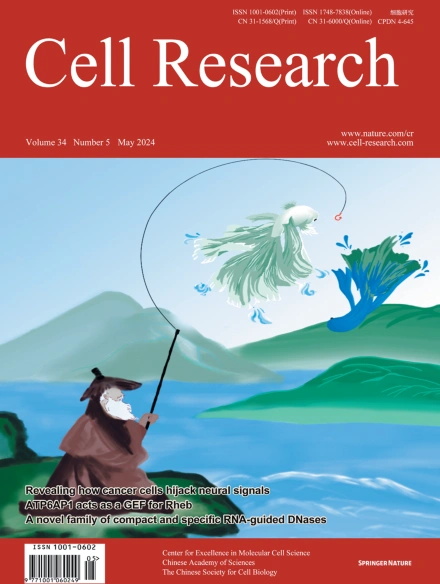
Advanced Search
Submit Manuscript
Advanced Search
Submit Manuscript
Volume 34, No 5, May 2024
ISSN: 1001-0602
EISSN: 1748-7838 2018
impact factor 17.848*
(Clarivate Analytics, 2019)
Volume 34 Issue 5, May 2024: 345-354 |
Multiple cancer cell types release LIF and Gal3 to hijack neural signals
Qun Xu1 , Ying Cao2 , Fanni Kong2 , Jiaqi Liu1 , Xin Chen3 , Yifei Zhao3 , Chin-Hui Lai4 , Xin Zhou3,5 , Hao Hu4 , Wei Fu3,5 , Jian Chen6 , Jing Yang1,2,5,7,*
1State Key Laboratory of Membrane Biology, School of Life Sciences, Peking University, Beijing, ChinaNeural signals can significantly influence cancer prognosis. However, how cancer cells may proactively modulate the nervous system to benefit their own survival is incompletely understood. In this study, we report an overlapping pattern of brain responses, including that in the paraventricular nucleus of the hypothalamus, in multiple mouse models of peripheral cancers. A multi-omic screening then identifies leukemia inhibitory factor (LIF) and galectin-3 (Gal3) as the key cytokines released by these cancer cell types to trigger brain activation. Importantly, increased plasma levels of these two cytokines are observed in patients with different cancers. We further demonstrate that pharmacologic or genetic blockage of cancer cell-derived LIF or Gal3 signaling abolishes the brain responses and strongly inhibits tumor growth. In addition, ablation of peripheral sympathetic actions can similarly restore antitumor immunity. These results have elucidated a novel, shared mechanism of multiple cancer cell types hijacking the nervous system to promote tumor progression.
https://doi.org/10.1038/s41422-024-00946-z